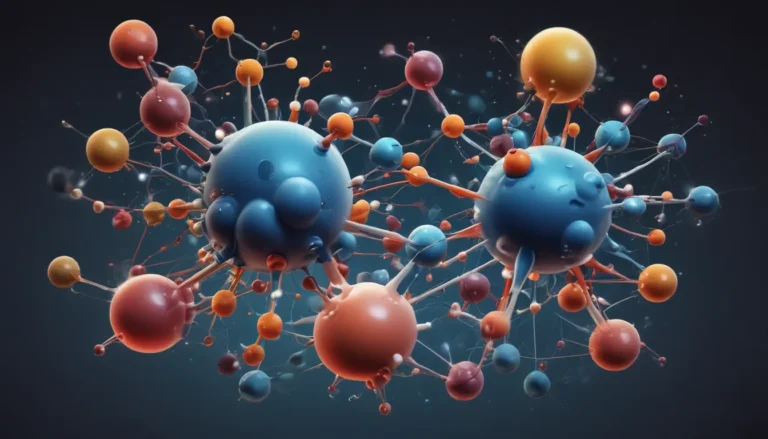A Note About Images: The images used in our articles are for illustration purposes only and may not exactly match the content. They are meant to engage readers, but the text should be relied upon for accurate information.
Chemistry is a fascinating field that delves into the intricate world of atoms and molecules, where chemical bonds dictate the behavior and properties of substances. One of the fundamental concepts in chemistry that continues to captivate researchers and students alike is resonance structure. This concept sheds light on the distribution of electrons within molecules, offering valuable insights into their stability, reactivity, and shape.
Resonance structures are like different dance moves for electrons, influencing how molecules behave and interact with others. By understanding resonance structures, chemists can predict how molecules will act in reactions, from forming new compounds to explaining the stability of certain substances. In this comprehensive guide, we will explore 17 intriguing facts about resonance structure that underscore its significance in the realm of chemistry.
Unveiling the Essence of Resonance Structure
Resonance structure is a concept in chemistry that describes the delocalization of electrons within a molecule. It occurs when a molecule or ion can be represented by multiple Lewis structures, known as resonance structures. These structures differ only in the arrangement of electrons, not in the connectivity of atoms. Resonance structures play a vital role in understanding the stability and reactivity of molecules.
Delving Deeper into Resonance Structures
Resonance structures are not isomers; they possess the same arrangement of atoms but differ in the distribution of electrons, leading to distinct representations of electron density. This unique feature contributes to the diverse properties and behavior exhibited by molecules with resonance structures.
The Intricate Dance of Electrons in Resonance Structures
In a resonance structure, electrons are not constrained to a single bond or position but are spread across multiple atoms. This electron delocalization enhances the stability of the molecule and influences various chemical properties such as bond length, bond strength, and reactivity.
- Resonance structures symbolized with double arrows (↔) signify that the actual electron distribution in the molecule is an average of the resonance contributors.
- Not all molecules have resonance structures as they require delocalized electrons to exhibit this phenomenon.
- The presence of resonance structures enhances the stability of a molecule by distributing charge density and reducing electron repulsion.
Unraveling the Impact of Resonance Structures
Resonance structures significantly influence the stability, shape, and reactivity of molecules. They provide essential insights into the distribution of charge, delocalization of electrons, and overall molecular structure. Understanding resonance structures is vital for predicting reaction mechanisms, determining molecular geometry, and explaining phenomena like aromaticity and the stability of certain compounds.
- Resonance structures impact chemical reactivity by stabilizing intermediate species and guiding the selectivity of reactions.
- They explain the stability and delocalization of electrons in aromatic compounds, elucidating their unique properties.
- Resonance structures can depict electron deficiency regions in molecules and stabilize positively charged species.
The Versatility of Resonance Structures
Resonance structures are not limited to organic molecules but are also observed in inorganic compounds and polyatomic ions. These diverse molecules showcase the importance of resonance structures in providing stability and elucidating unique properties.
- Resonance structures play a vital role in predicting the behavior of polymers in polymer chemistry.
- They are instrumental in explaining acid-base reactions and guiding the stability of conjugate bases.
The Quest for Understanding Resonance Structure
Resonance structures are a cornerstone in the field of chemistry, offering a deeper understanding of molecular bonding and behavior. They are essential for drawing accurate Lewis dot structures, predicting molecular geometry, and explaining the stability and reactivity of molecules.
- Resonance structures play a crucial role in molecular orbital theory, aiding in the description of electron distribution and molecular properties.
- Curved arrows can be used to represent the movement of electrons between resonance forms.
Embark on a Fascinating Journey
Resonance structures offer a captivating glimpse into the intricate dance of electrons within molecules, revealing the hidden patterns that govern molecular stability and reactivity. By exploring the mysteries of resonance structure and unraveling the secrets of chemical bonding, you can elevate your understanding of the fundamental building blocks of chemistry. Let your curiosity guide you as you embark on a fascinating journey through the captivating world of resonance structures.
Conclusion
In conclusion, resonance structure serves as a fundamental concept in chemistry, providing essential insights into the stability, reactivity, and shape of molecules. By delocalizing electrons and distributing charge density, resonance structures contribute to the overall stability of a molecule, influencing its behavior and properties. Understanding the significance of resonance structures opens doors to deeper insights and enriches your knowledge of molecular bonding and behavior.
FAQs
Q: What is resonance structure?
A: Resonance structure refers to the representation of a molecule or ion using multiple Lewis structures that differ only in the placement of electrons, showcasing the delocalization of electrons within the molecule.
Q: How do resonance structures impact molecule stability?
A: Resonance structures enhance the stability of a molecule by delocalizing electrons and distributing charge density, reducing electron repulsion and promoting overall stability.
Q: Can all molecules have resonance structures?
A: Not all molecules can exhibit resonance structures, as the presence of conjugated systems or lone pairs of electrons is necessary to showcase delocalization of electrons.
Q: How do resonance structures impact molecular geometry?
A: Resonance structures provide a more accurate representation of electron distribution, aiding in the determination of bond lengths and angles within a molecule.
Q: Can resonance structures exist in both organic and inorganic compounds?
A: Yes, resonance structures are prevalent in both organic and inorganic compounds, highlighting their significance in providing stability and elucidating unique properties.
Embark on a Journey of Discovery
Resonance structures beckon you to delve deeper into the realm of chemistry, uncovering the wonders of molecular bonding and behavior. By exploring the intricate dance of electrons within molecules and understanding the impact of resonance structures on stability and reactivity, you embark on a journey of discovery that enriches your knowledge and expands your understanding of the world of chemistry. Embrace the unique beauty of resonance structures and let your curiosity guide you to new horizons of scientific exploration.






